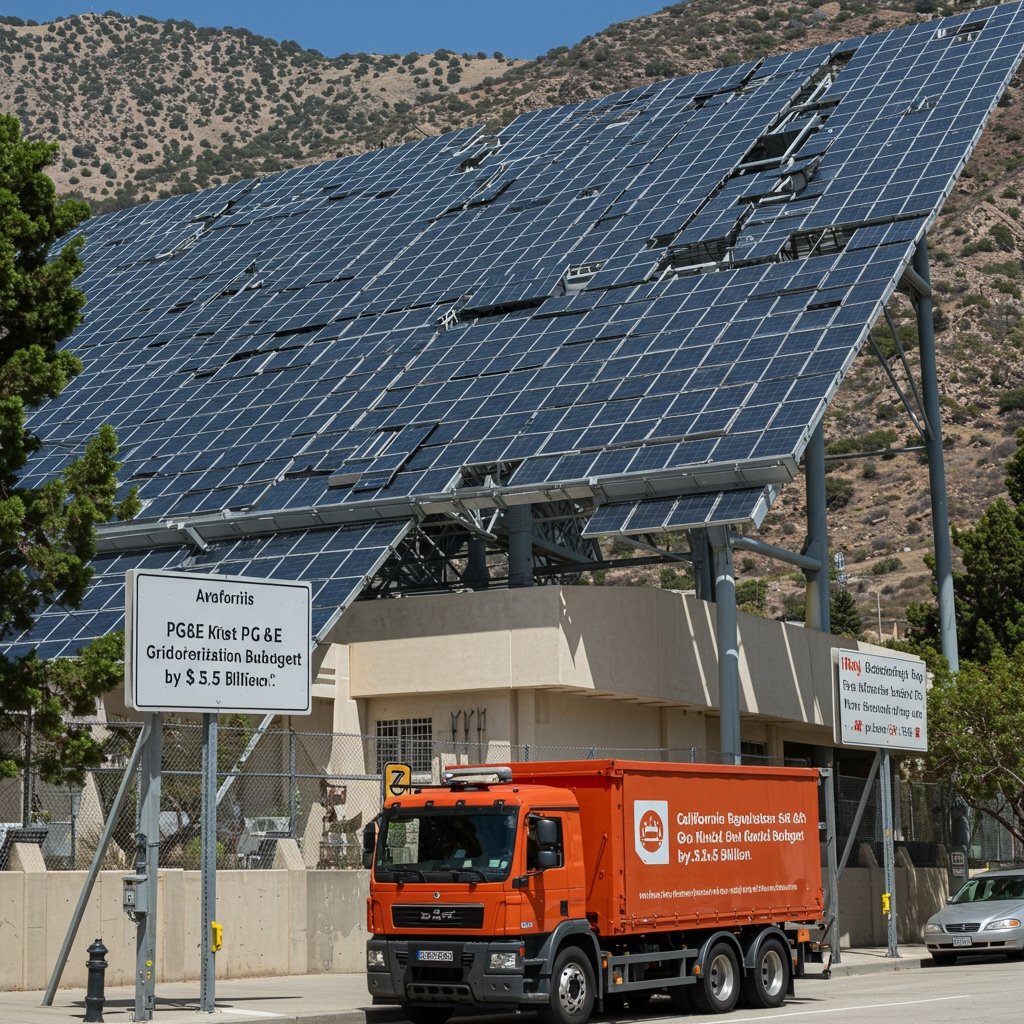CPUC Approves Modified PG&E Grid Modernization Plan, Citing Cost Concerns
SAN FRANCISCO, CA – The California Public Utilities Commission (CPUC) delivered a significant ruling on February 21, 2025, approving a substantially modified version of Pacific Gas and Electric’s (PG&E) proposed multi-year plan for grid modernization and safety improvements. The decision marks a critical juncture in balancing California’s urgent need for a safer, more resilient electric grid with the imperative to manage costs for millions of utility customers.
PG&E had initially submitted a comprehensive proposal requesting authorization to invest approximately $12 billion through 2030. The ambitious plan outlined a broad scope of infrastructure upgrades aimed at addressing dual priorities: significantly enhancing wildfire prevention measures in high-risk areas and facilitating the integration of a rapidly increasing volume of renewable energy resources onto the grid. The utility argued that this level of investment was necessary to build a climate-resilient grid, drastically reduce wildfire ignition risks associated with its equipment, and meet the state’s clean energy mandates.
Regulatory Review and Fiscal Responsibility
The CPUC’s extensive review process involved detailed analysis of PG&E’s request, considering expert testimony, public input, and the potential impact on electricity rates. Regulators weighed the demonstrable need for grid improvements, particularly in light of California’s escalating wildfire crisis and ambitious renewable energy goals, against the potential financial burden on ratepayers across Northern and Central California. The Commission acknowledged the critical nature of PG&E’s proposed safety enhancements but expressed significant concerns regarding the overall cost trajectory and its potential to drive excessive increases in customer bills.
Ultimately, the CPUC’s ruling authorized a significantly reduced investment, approving only $8.5 billion for PG&E’s grid modernization and safety initiatives through the same 2030 timeframe. This represents a $3.5 billion reduction from PG&E’s original request.
Implications and Stakeholder Reactions
The decision elicited varied responses from key stakeholders. PG&E, while expressing commitment to implementing the approved plan, voiced concern that the substantial reduction in authorized funding could inevitably slow the pace of critical safety projects. Utility officials suggested that a lower investment level might necessitate prioritizing certain upgrades over others, potentially deferring some desired improvements that were part of the initial $12 billion vision. The utility will now need to recalibrate its implementation strategy to align with the lower budget, which could impact timelines for specific undergrounding, hardening, and advanced technology deployments.
Conversely, consumer advocacy groups largely lauded the CPUC’s decision. Advocates had strongly argued against authorizing PG&E’s full request, asserting that the proposed $12 billion plan was excessively expensive and could lead to unaffordable rate hikes for millions of households and businesses already grappling with high energy costs. They viewed the $8.5 billion approval as a necessary protection against excessive cost increases, emphasizing the need for stringent oversight to ensure every authorized dollar is spent efficiently and effectively on the most impactful projects.
Focus on Targeted High-Risk Areas
A key element of the CPUC’s modified approval is its emphasis on a more targeted scope compared to PG&E’s initially broader proposal. The authorized plan directs PG&E to focus intensely on upgrades within identified high-risk areas – regions most susceptible to wildfires or critical for grid stability and renewable integration. This approach aims to maximize the safety and reliability benefits achieved with the constrained budget, prioritizing projects with the highest potential return on investment in terms of risk reduction and grid performance.
This contrasts with PG&E’s initial $12 billion submission, which envisioned a more widespread application of grid modernization technologies and infrastructure upgrades across its vast service territory in Northern and Central California. The CPUC’s decision effectively mandates a more strategic, surgical approach to capital spending over the next several years.
The Path Forward
The CPUC’s February 21, 2025, ruling underscores the complex challenge facing California utilities and regulators: modernizing aging infrastructure to withstand climate impacts and integrate renewables, while simultaneously ensuring energy remains affordable for customers. The $8.5 billion authorized represents a significant investment, but the reduction from the requested $12 billion signals the CPUC’s firm stance on cost containment.
PG&E must now proceed with implementing the modified plan through 2030, focusing on the targeted priorities outlined by the Commission. The utility’s execution of these projects will be subject to ongoing regulatory oversight. Future rate adjustments will be influenced by this authorized spending, though likely less dramatically than if the full $12 billion had been approved. The decision sets a precedent for how large-scale utility infrastructure investments will be scrutinized and approved in California, balancing safety imperatives with the critical need for ratepayer protection.



















